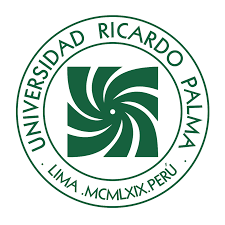LPG Batch Oven with PID control for the automation of the electrostatic paint curing process.
DOI:
https://doi.org/10.31381/perfilesingenieria.v20i21.6640Keywords:
electrostatic painting, automation, electrostatic painting, industrial oven, PID controller, automation, electrostatic painting, industrial oven, infrared burnerAbstract
This article presents the improvement of the surface coating process with electrostatic painting by manufacturing an LPG batch-type curing oven with a working volume of 20 m³. The structure was manufactured with 3/16” x 2” structural angles, sandwich panels made of 0.6 mm and 1.0 mm galvanized steel sheets and with a 2” thick wool interior as insulation. 6 LPG catalytic infrared burners were used with a total power of 65.4 kW/h, with which the temperature of 180 °C was reached in 20 minutes with maximum load. A graphical interface was designed with a touch screen. A Raspberry Pi 3B+ was used to run the control and monitoring software developed in Python. Industrial PID temperature controllers and three-wire PT-100 sensors were used. Mathematical modeling of the oven was carried out to obtain the transfer function and tuning constants of the PID controller. Nine tests were carried out to ensure proper operation of the oven. Sample sheets with thicknesses from 90 µm to 106 µm were painted and cured, which guarantees the durability of the applied paint. Finally, adhesion, scratching, bending and sanding tests were carried out, obtaining optimal results in each one.
Downloads
References
Aduanas. (s.f.). Consulta por Importador/Exportador. http://www.aduanet.gob.pe/cl-ad-itconsultadwh/ieITS01Alias?accion=consultar&CG_consulta=1
Åström, K. (2009). Control PID avanzado. Madrid, España: Pearson Educación S. A.
Brucart, E. B. (1987). GAS NATURAL Caracteristicas, distribucion y aplicaciones industriales. Barcelona: Editores tecnicos asociados.
Callejón Ferre, Á. J. (2009). Iintalacioens de gas en el sector industrial, Agricola, urbano y domestico. Almeria: Universidad de Almeria.
Castaño Giraldo, S., Hernández Gómez, D., & Gallo Blandón, J. (Julio de 2013). Control y monitoreo de temperatura para un horno de curado de prendas índigo utilizando lógica difusa y controles PI. Revista Politécnica ISSN, 69-81.
Çengel, Y. (2007). Transferencia de calor y masa, un enfoque práctico. Reno: McGraw-Hill Companies, Inc.
García Higuera, A. (2005). El control automático en la industria. Cuenca: Ediciones de la Universidad de Castilla - La Mancha.
Lizarraga, G. (2016). Diseño de línea para pintado electrostático. Córdoba: Universidad Nacional de Córdoba.
Logicbus. (17 de 06 de 2019). Protocolos de comunicación industriales. https://www.logicbus.com.mx/blog/protocolos-de-comunicacion-industriales/
Montenegro, S., & Tixe, T. (2012). Mejora del proceso de pintura electrostática de la planta de producción “SUMAR”. Quito: Universidad Central de Ecuador.
Montoya, J., Orozco, C., & González, H. (Abril de 2011). Optimización energética de un horno de secado de piezas de PRFV implementando PML. Scientia Et Technica, 17(47), 307-312.
Ogata, K. (2010). Ingeniería de control moderna (5 ed.). Madrid, España: PEARSON EDUCACIÓN, S.A.
ONSEMI. (s.f.). MMBT3904L DATASHEET. https://www.mouser.pe/datasheet/2/308/1/MMBT3904LT1_D-2316262.pdf
Pintura Para. (17 de julio de 2016). Pintura electrostática. https://www.pintura-para.com/pintura-electrostatica/
Ponsa, P., & Granollers, A. (2007). Diseño y automatización industrial. Madrid: Pirámide.
Ramos, I. (2020). Diseño energético de un horno piloto de curado para tratamiento de acabado de pintura electrostática en superficies metálicas y MDF. Lima: Pontificia Universidad Católica del Perú.
Rougeron, C. (1977). Aislamiento acústico y termico en la construcción. Barcelona: Editores Técnicos Asociados, S.A.
Senner, A. (1994). Principios de electrorecnia. Barcelona: Editorial Reverté S.A.
Silge Electrónica. (s.f.). Silge. https://blog.silge.com.ar/: https://blog.silge.com.ar/soluciones-para-el-control-de-temperatura-industrial
Trinks, W. (2004). Industrial Furnaces (6 ed.). New Jersey: John Wiley & Sons, Inc.
Yarasca, J., & Espinoza, M. (2015). Propuesta de implementación de un sistema de pintura electrostática para piezas metálicas utilizadas en tableros y celdas eléctricas. Lima: Universidad Ricardo Palma.
Published
How to Cite
Issue
Section
License
Copyright (c) 2024 RICARDO JOHN PALOMARES ORIHUELA

This work is licensed under a Creative Commons Attribution 4.0 International License.
In the event that the manuscript is approved for its next publication, the authors retain the copyright and assign to the journal the right of publication, edition, reproduction, distribution, exhibition and communication in the country of origin, as well as in the abroad, through print and electronic media in different databases. Therefore, it is established that after the publication of the articles, the authors may make other types of independent or additional agreements for the non-exclusive dissemination of the version of the article published in this journal (publication in books or institutional repositories), provided that it is explicitly indicated that the work has been published for the first time in this journal.
To record this procedure, the author must complete the following forms:

1.png)








